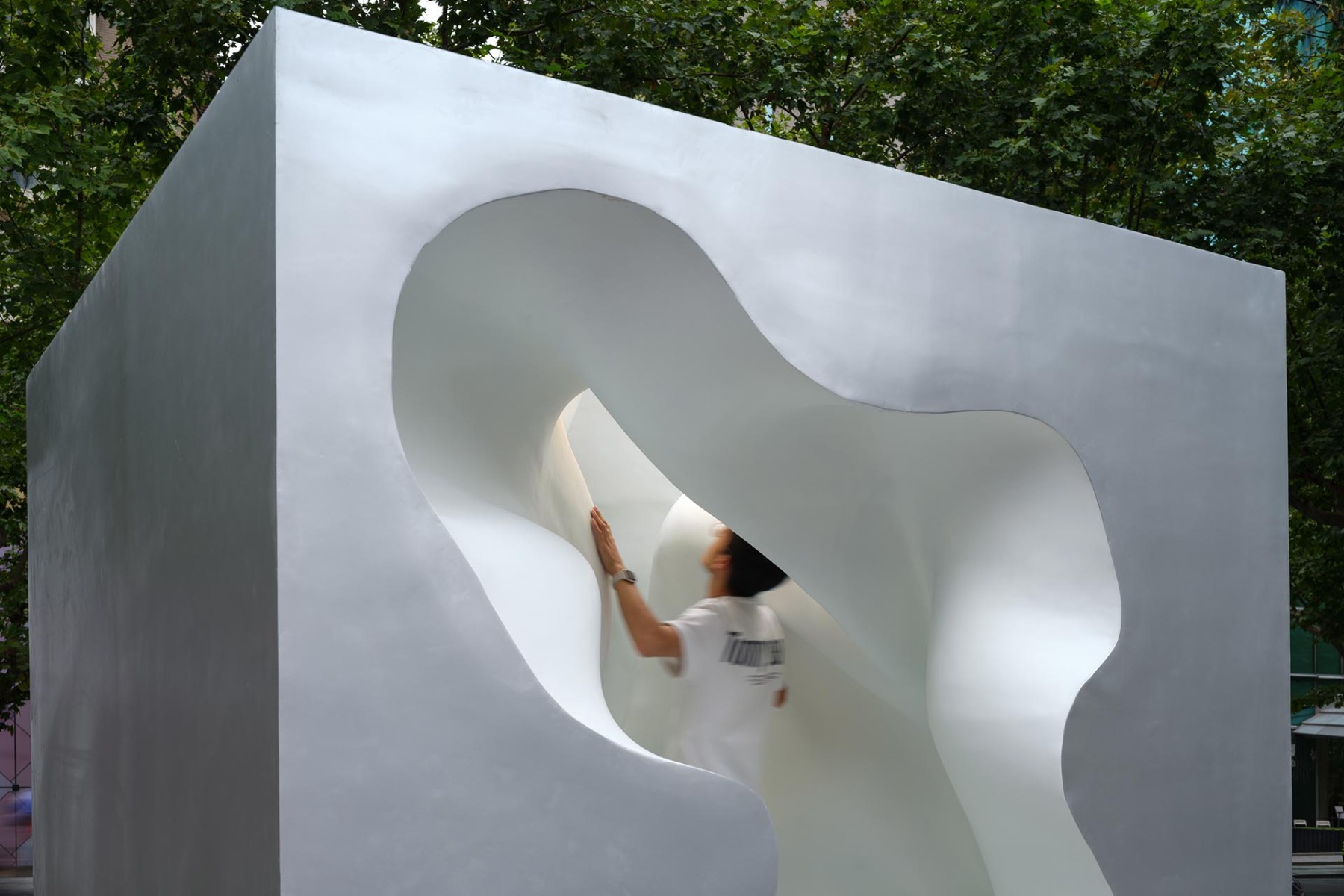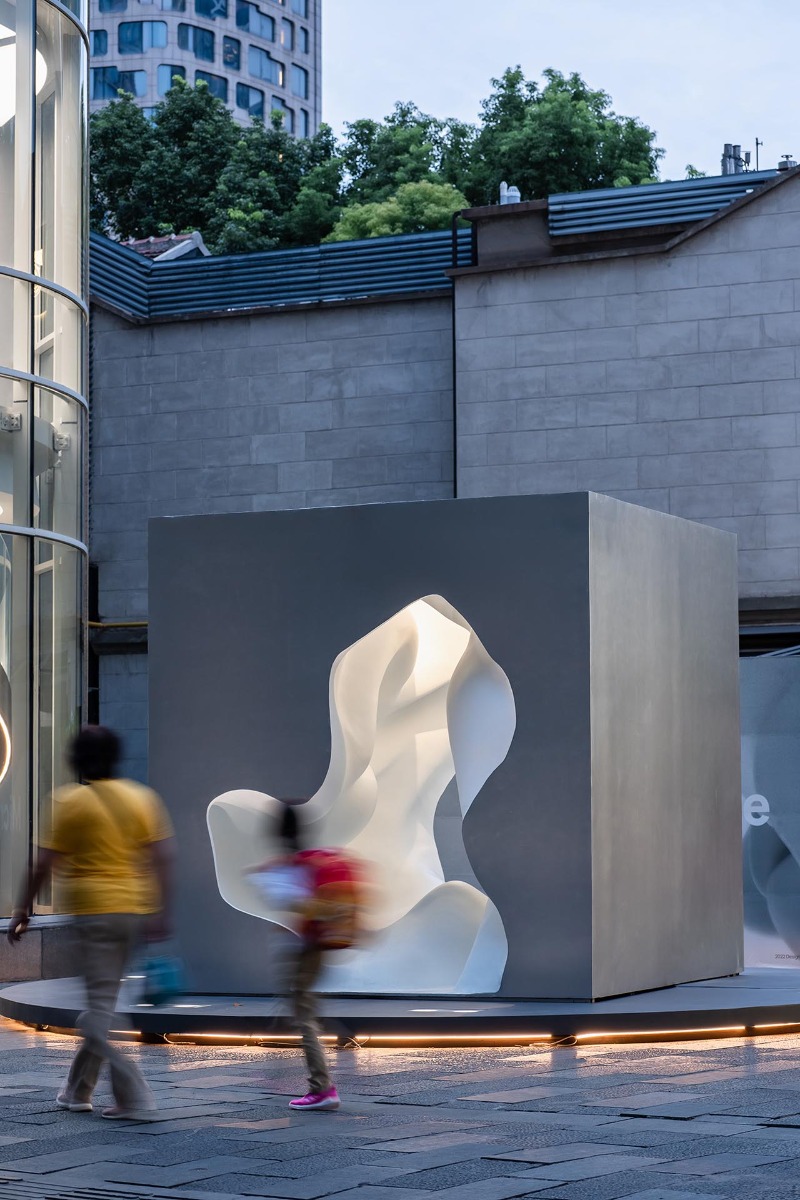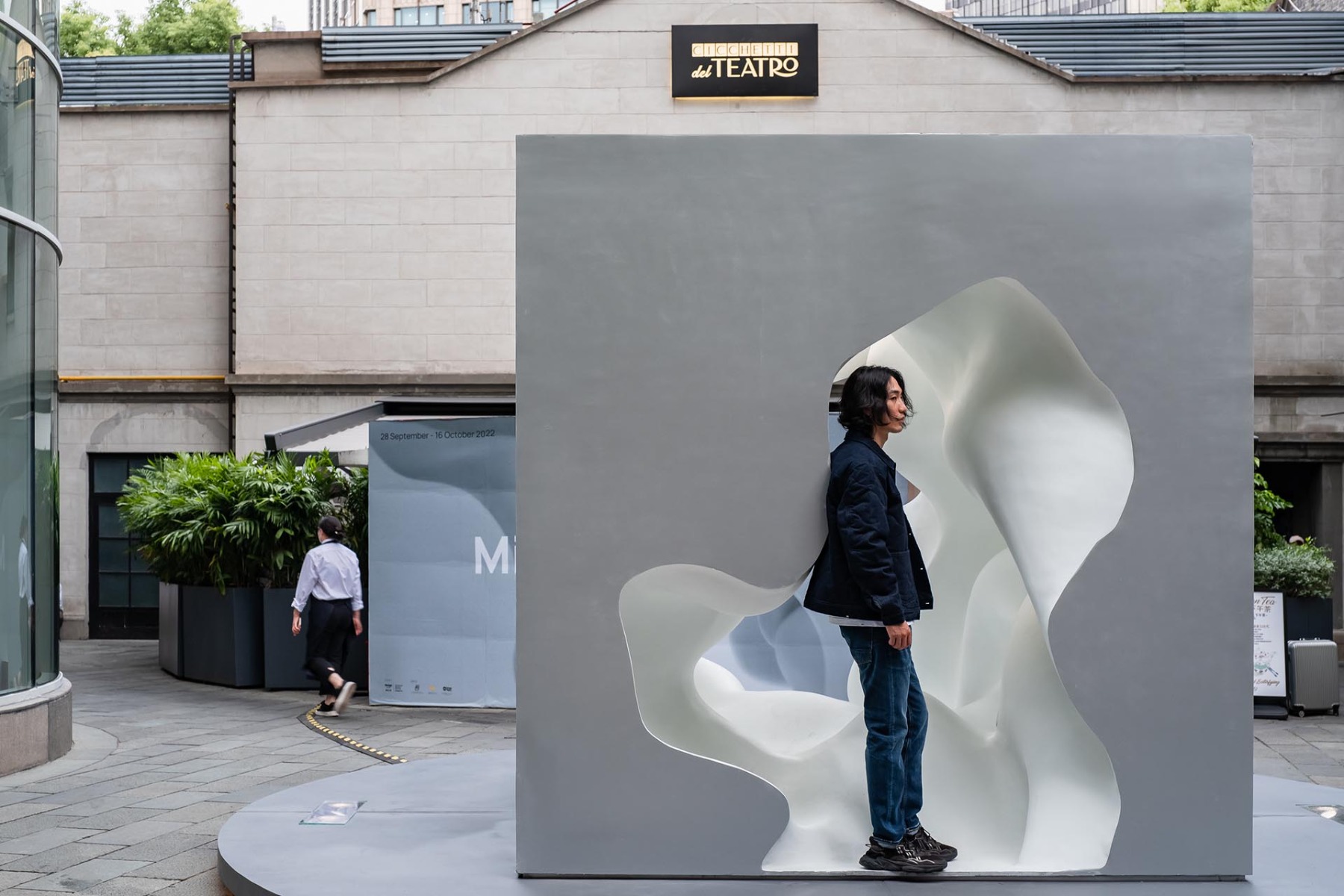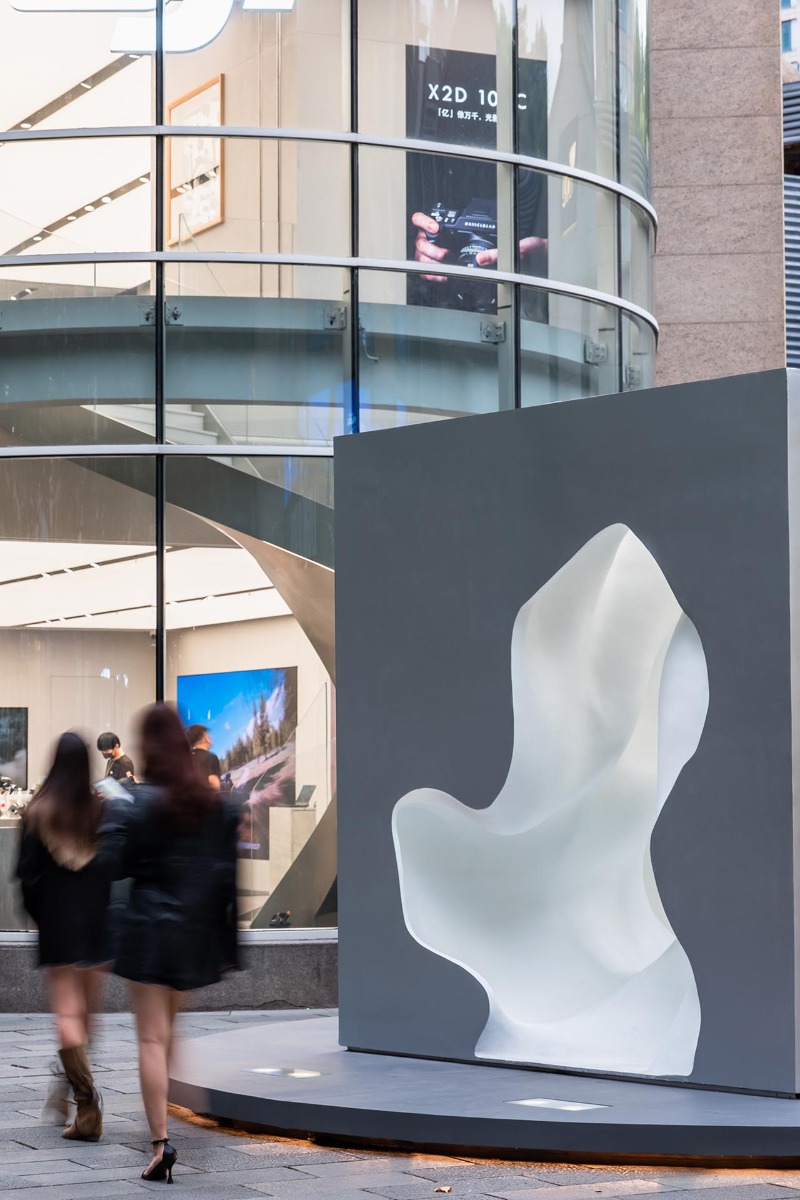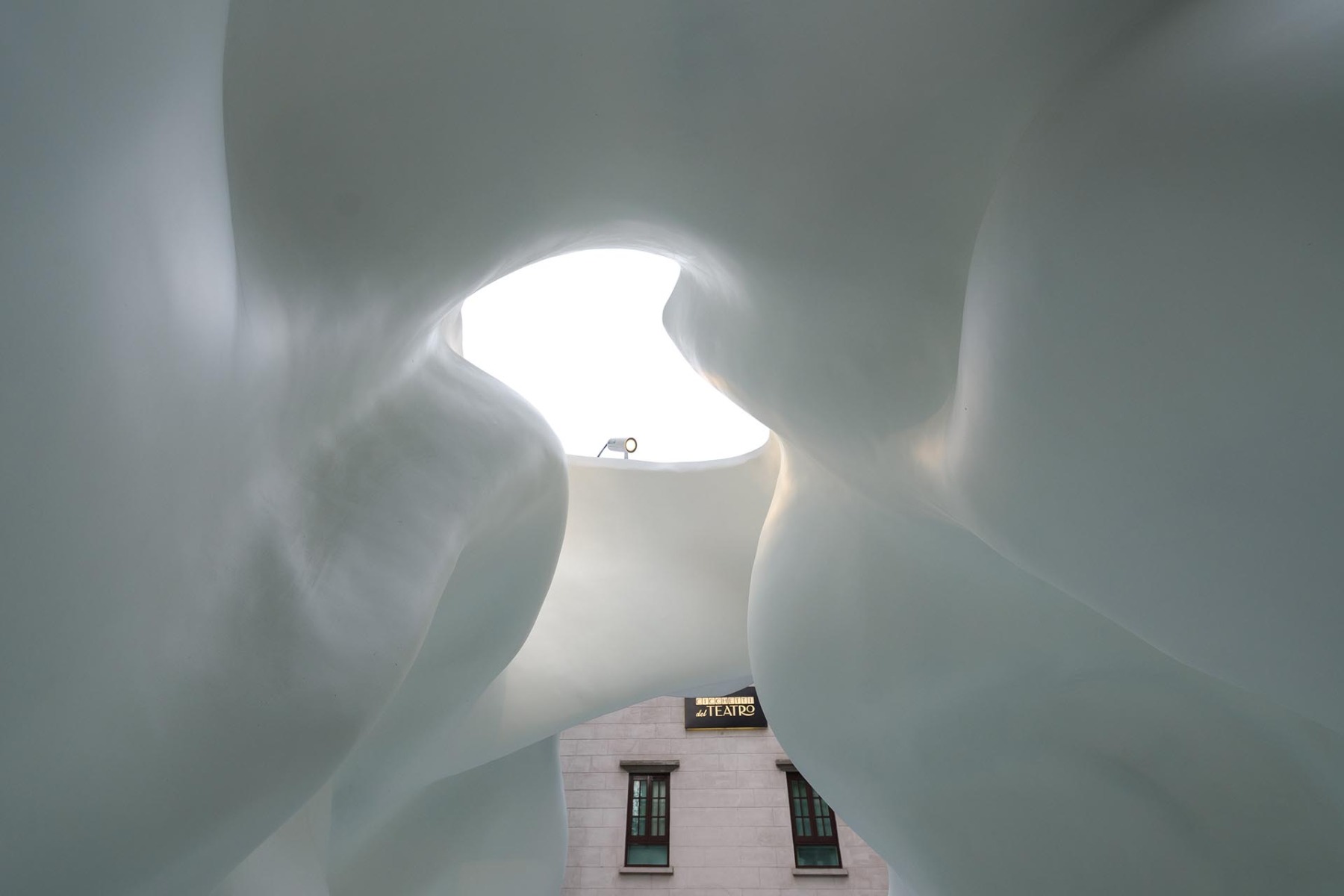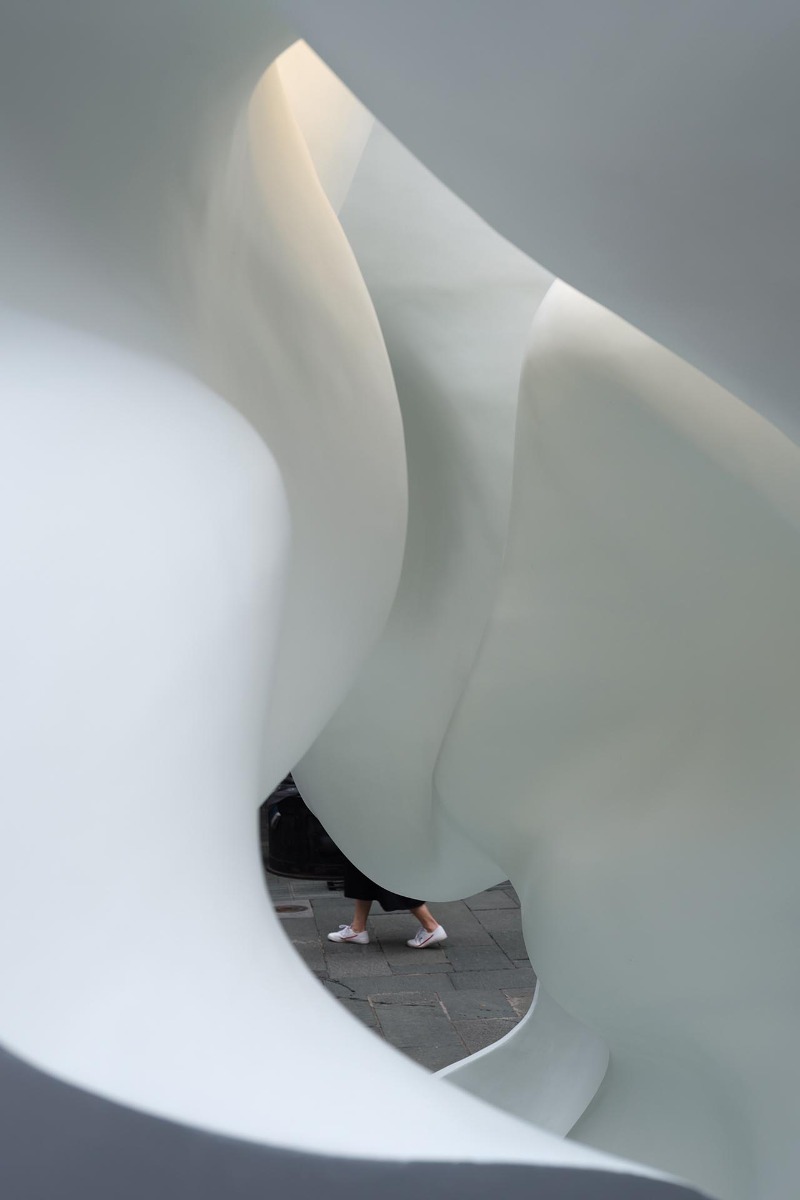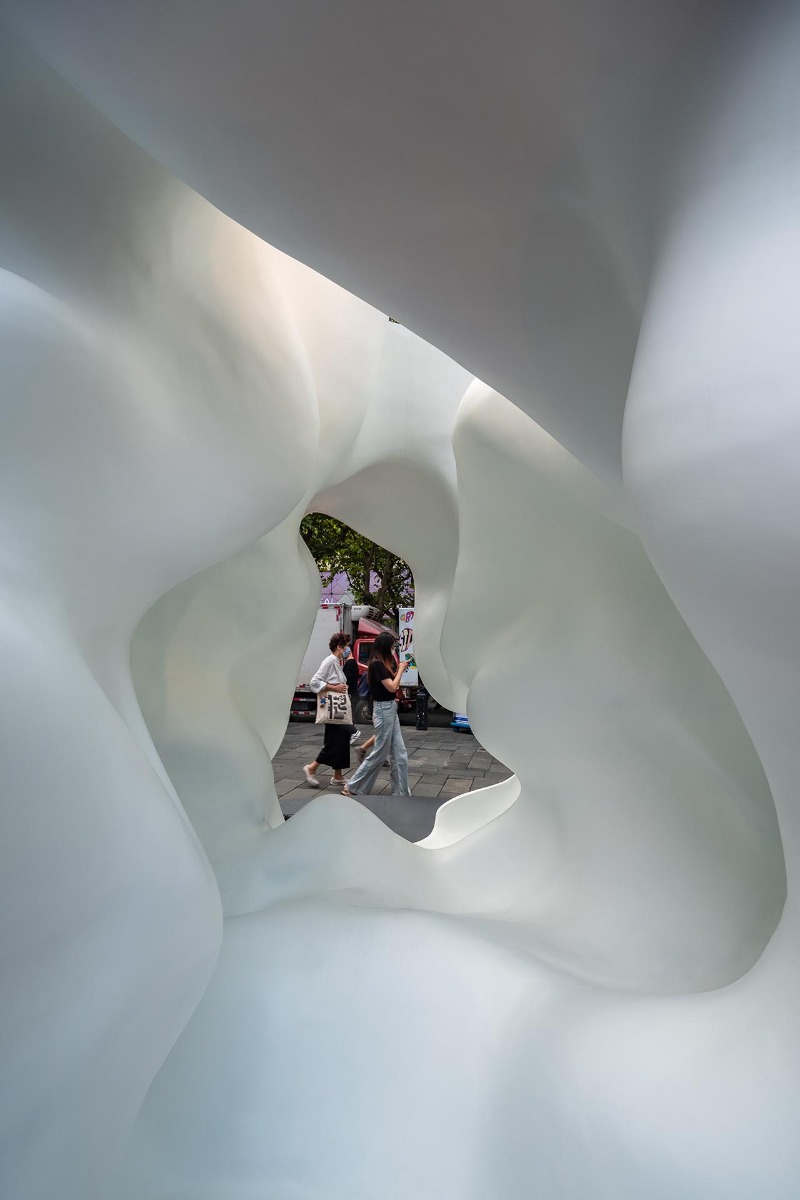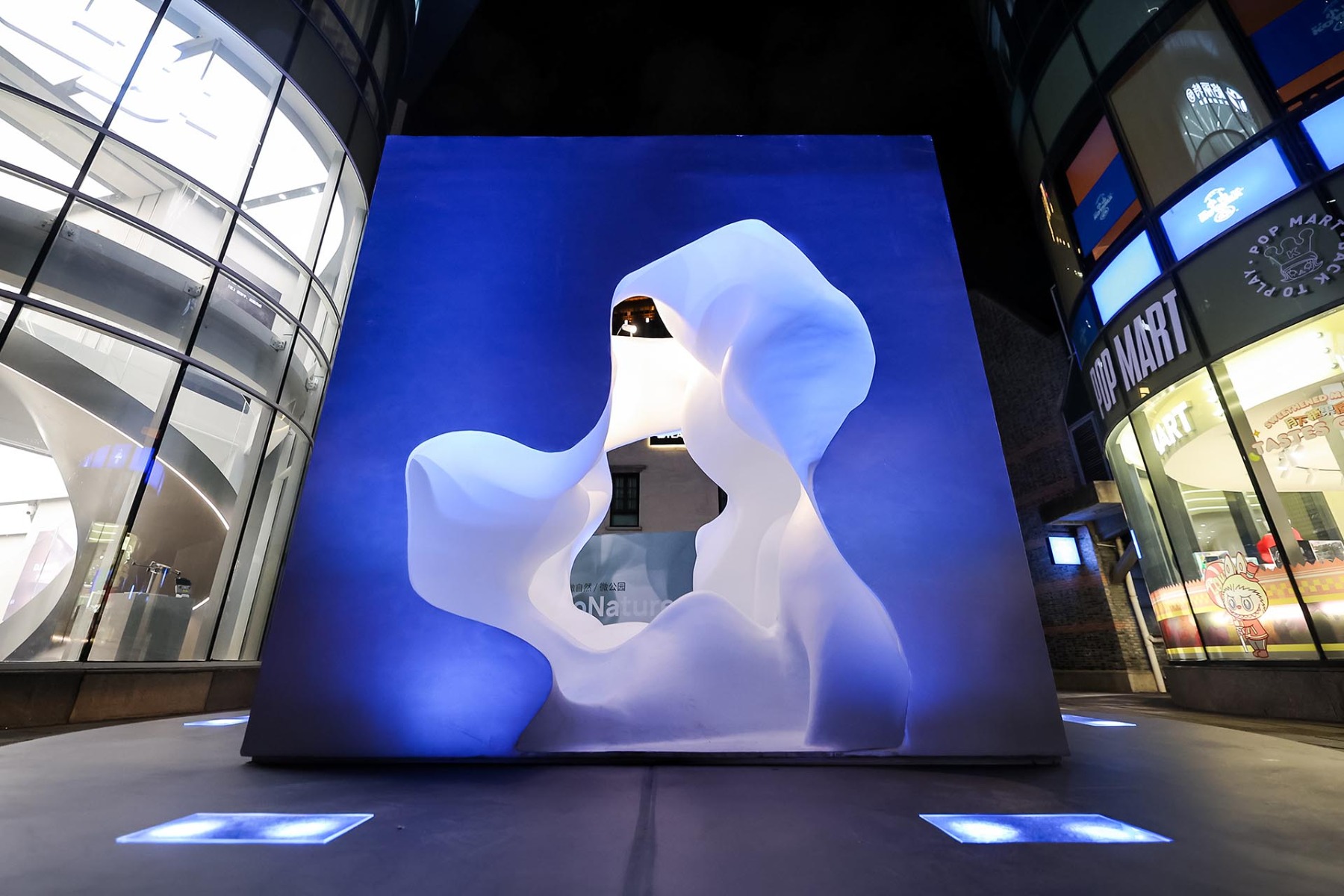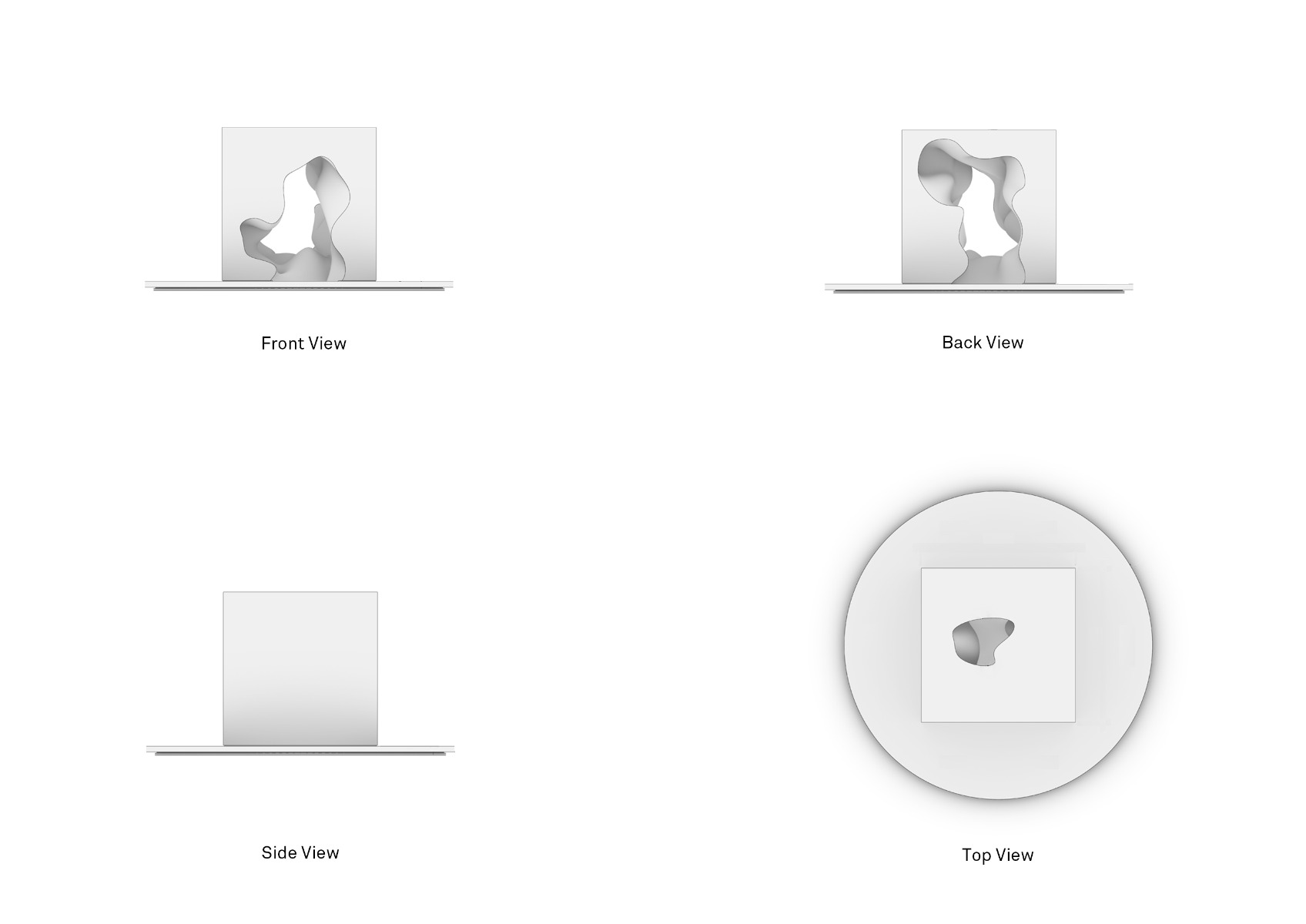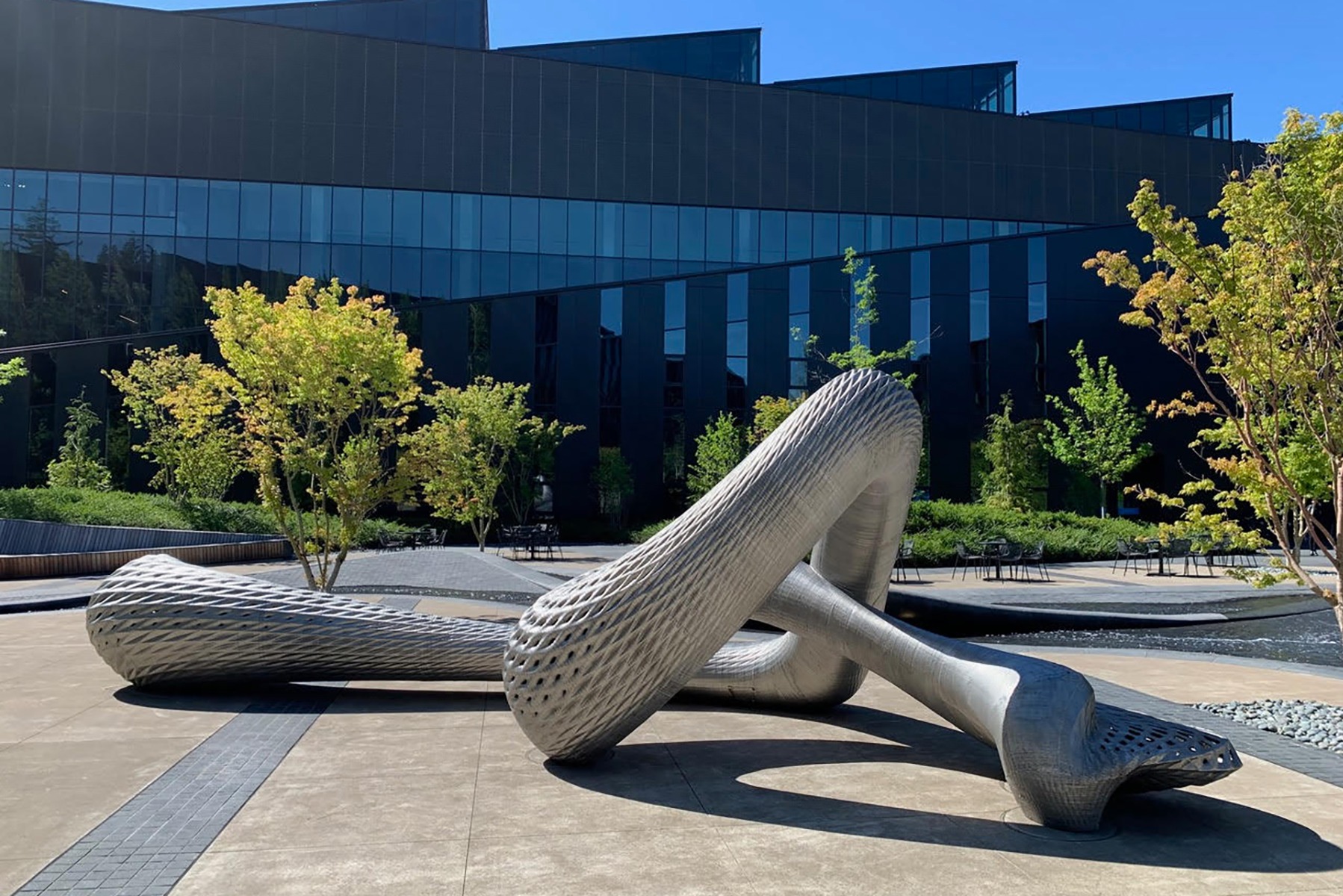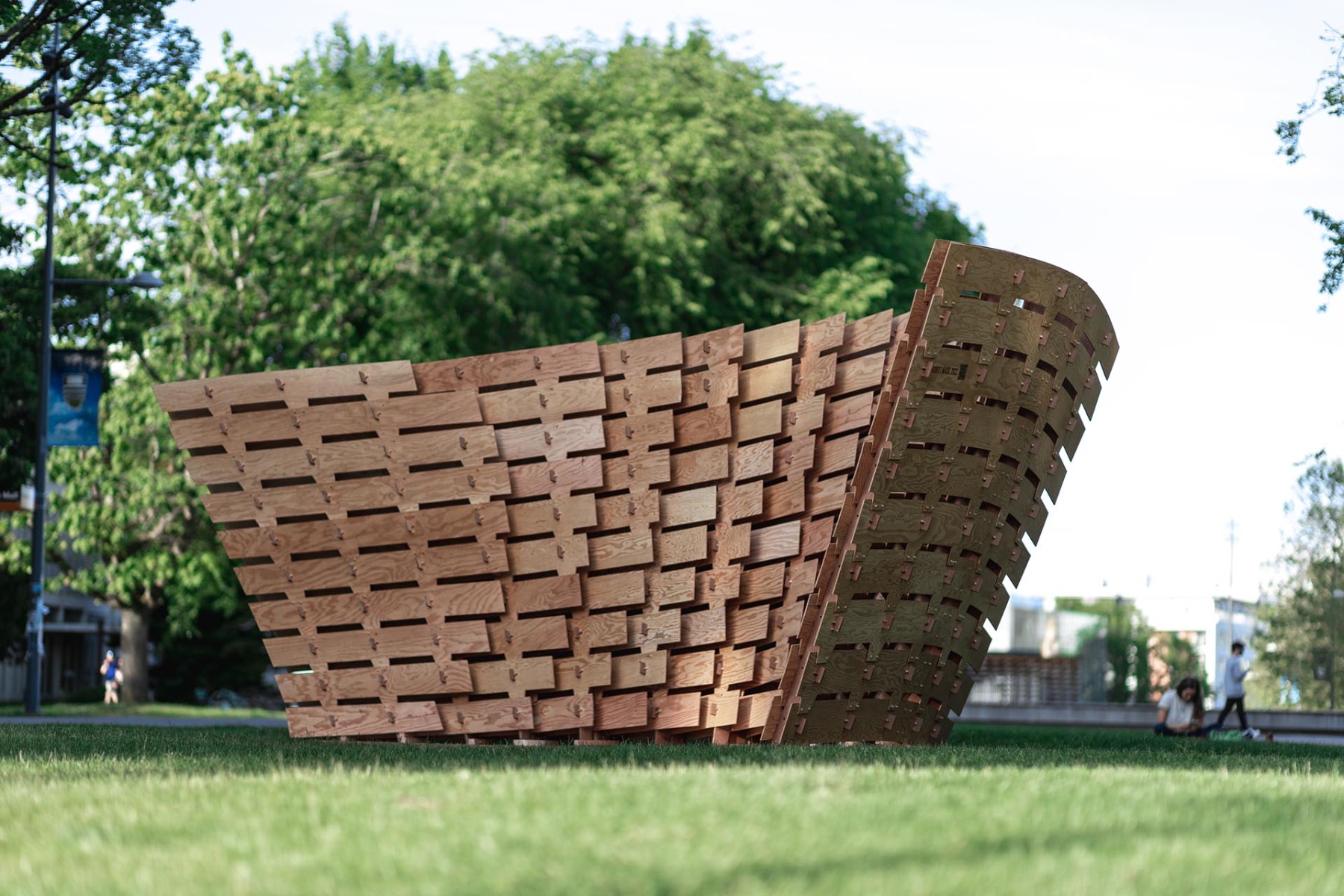Parametric urban furniture
MicroNature Pavilion by Atelier Ping Jiang in Shanghai

MicroNature Pavilion, © Renzi Zhu


As street furniture, MicroNature will foster interaction in the city. © EID Arch
Beautiful contradiction
Nicholas of Cusa described God as the coincidence of all opposites (Coincidentia Oppositorum). Traditional Chinese architecture has always worked according to this principle by connecting geometric linearity with elements of nature. The MicroNature Pavilion, whose inner void updates the formal language of old rock gardens, continues this custom. Organic shape and linear geometry coexist in a calculated relationship of tension: something new arises from the duality of nature and human activity.


Children immediately make the hollow space their own. © EID Arch


Organic shape and linear geometry coexist in a calculated relationship of tension. © Renzi Zhu
Playful intervention
As street furniture, MicroNature will foster interaction in the city. The interior of the piece, with its folds and bulges, calls to mind an eroded canyon or Verner Panton’s furnishings from the 1960s. Children immediately make the hollow space their own, but even adults find ways to sit inside the artificial natural landscape.


Modern urban furniture, © Renzi Zhu
Parametric design
The pavilion deliberately demonstrates a modern form of street furniture as a playful intervention. However, it is the connection of complex shapes and digital production technology that is decisive here: MicroNature was parametrically designed and produced digitally using Programmable Logic Array (PLA). In this respect, it serves as a blueprint for further works.
Architektur: Atelier Ping Jiang | EID Arch
Bauherr: Xintiandi Design Festival / Design Shanghai
Standort: Shanghai, China (CN)
Design Team: Ping Jiang, Iris Li, Michelle Bao, Ling Niu, Sai Leng
3D Printing & Material Consultant: Wuhu Jiang Zhu 3D Technology
Lighting Consultant: BPI
